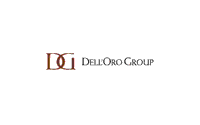 Verizon confirmed that 100G traffic can be successfully carried over its regional Ethernet network between two 100G network interface devices while maintaining carrier-grade performance.
Verizon confirmed that 100G traffic can be successfully carried over its regional Ethernet network between two 100G network interface devices while maintaining carrier-grade performance.In a trial, Verizon transmitted 100G using the Canoga Perkins 9145E100G CloudBuster network interface device (NID) over the Verizon regional switched Ethernet services network in the Dallas area. Splice Communications, a Verizon Global Wholesale customer, provided connectivity to CyrusOne, a global data center provider that served as the end user in the trial.
Verizon said key metrics for the trial were well above industry standards for Ethernet virtual connections. The metrics consisted of frame delay; delay variation; and throughput, the amount of data successfully delivered.
“This accomplishment, which we believe is an industry first, is a significant step forward along the evolution of 100G technology in preparation for the day when demand for higher network speed and capacities outgrows current technologies,” said Guru Pai, chief product officer and senior vice president of corporate technology. “Having 100G network access will be important for businesses that operate data centers and for mobile backhaul and other service applications.
“And while the pace of advancement is important, we’re equally focused on performance – and this trial proves we can carry 100G traffic to customer premises while maintaining the level of quality they demand,” Pai said.
http://newscenter.verizon.com/corporate/news-articles/2014/07-16-100g-nid-trial/
- Verizon is using the Fujitsu FLASHWAVE 9500 platform and the Coriant 7100 in its metro deployment, which is the “last-mile” connectivity from the network to the customer.
- As of April 2014, Verizon had 39,000 miles of 100G technology deployed on its global IP network.


















